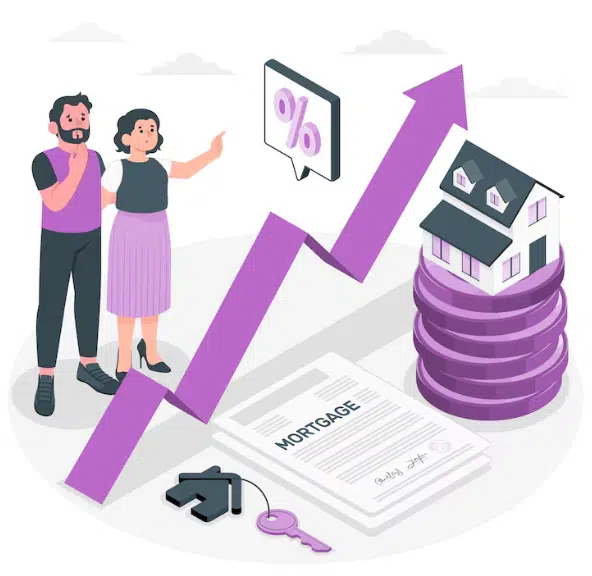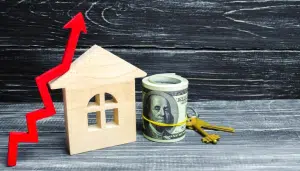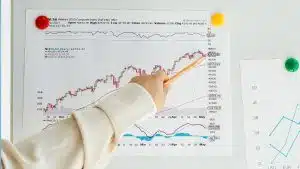In the world of finance, few factors wield as much power as interest rates. These rates, set by the Federal Reserve, play a pivotal role in shaping the landscape of borrowing and lending. In the context of the United States, the influence of interest rates on the mortgage refinancing market cannot be overstated. Homeowners across the nation are keenly attuned to fluctuations in these rates, as they directly impact the affordability of refinancing options.
Understanding the nuances of the refinancing market requires a comprehensive grasp of interest rate dynamics. As these rates rise or fall, they influence not only the cost of borrowing but also the potential savings for homeowners looking to lower their mortgage payments. We will explore the fundamental mechanics that drive refinancing decisions and how these decisions correlate with broader economic shifts.
The basics of mortgage refinancing
Mortgage refinancing is a financial strategy that allows homeowners to replace their existing mortgage with a new one, often under different terms. This maneuver can be advantageous for several reasons, including reducing monthly payments, shortening loan terms, or transitioning from an adjustable-rate to a fixed-rate mortgage. At the heart of the refinancing decision is the prevailing interest rate environment. Lower rates offer an appealing opportunity for homeowners to secure better terms on their loans, potentially saving thousands over the life of the mortgage.
When interest rates are low, homeowners are more inclined to refinance their loans. This desire is driven by the potential for significant savings and financial relief. Conversely, when rates rise, the attractiveness of refinancing diminishes, as the cost savings may not justify the expenses and effort involved. Therefore, understanding the nature of interest rates and their impact on the refinancing process is crucial for homeowners seeking to optimize their mortgage conditions.
How interest rates affect refinancing activity
The relationship between interest rates and refinancing activity is a dynamic one. When market interest rates drop, refinancing activity typically surges as homeowners rush to lock in lower rates. This results in a spike in applications for refinancing, leading to increased competition among lenders and often more favorable terms for borrowers. The ability to reduce monthly payments or shorten the loan duration makes refinancing an attractive proposition during periods of low rates.
Conversely, when interest rates rise, the incentive to refinance diminishes. Homeowners with existing low-rate mortgages are less likely to benefit from refinancing, causing application volumes to decline. This can result in a stabilization of the refinancing market, as fewer people seek to alter their mortgage terms. The economic environment plays a significant role in these decisions, as homeowners weigh the long-term benefits against short-term costs associated with refinancing.
The role of the Federal Reserve
The Federal Reserve, as the central banking system of the United States, has a profound influence on interest rates. Through its monetary policy, the Fed sets the federal funds rate, which indirectly affects mortgage rates. By purchasing or selling government securities, the Fed can influence the money supply, thereby impacting borrowing costs. These actions are intended to maintain economic stability and control inflation.
During periods of economic uncertainty, the Fed often employs policies to lower interest rates, encouraging borrowing and investment. This presents homeowners with opportunities to refinance their mortgages under more favorable conditions. The Fed’s actions can trigger appreciable shifts in the refinancing market, making it essential for homeowners to stay informed about policy changes and anticipate their potential impact.
Strategies for homeowners considering refinancing
For those contemplating a refinancing strategy, timing is a crucial element. Decisions made without careful consideration of interest rate trends can lead to missed opportunities or increased costs. Homeowners should continuously monitor market conditions, as well as broader economic signals, in order to make informed choices about their mortgages. Refinancing at the right time can yield substantial savings, empowering homeowners to better manage their financial future.
Another strategy is to assess personal financial goals and objectives. Each homeowner’s situation is unique, and what proves beneficial for one person may not be so for another. It’s important to evaluate personal circumstances such as income stability, credit score, and future plans when considering refinancing. Constructing a tailored refinancing strategy that aligns with both current needs and long-term goals is paramount.
Pros and cons of refinancing
Refinancing a mortgage carries both advantages and disadvantages that homeowners must weigh carefully. The primary benefit of refinancing is the potential cost savings through reduced monthly payments or shorter loan terms. It can also provide an opportunity for debt consolidation or access to home equity for necessary expenses. These aspects make refinancing an attractive option for many during favorable interest rate conditions.
However, refinancing is not without its downsides. The process can be expensive, with costs ranging from application fees to potential prepayment penalties on the original loan. Additionally, it may take several years to break even on closing costs, depending on the reduced payment amounts. Homeowners must carefully calculate these factors to ensure that refinancing aligns with their financial goals, particularly in periods of volatile interest rates.





